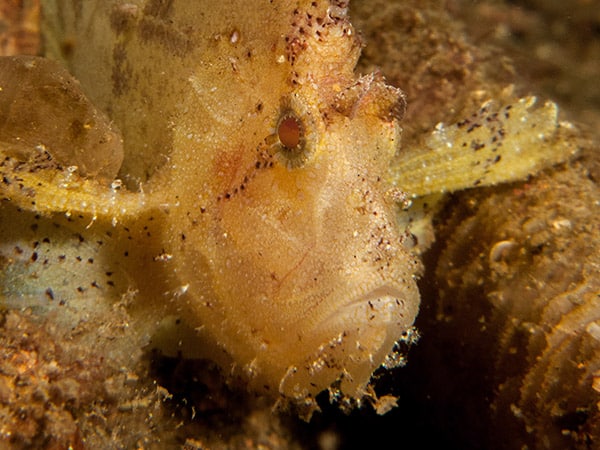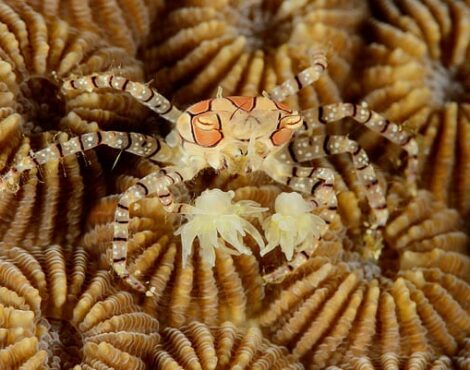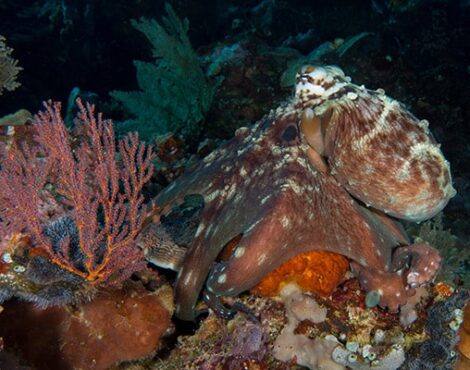Many of the guests that we welcome to Siladen Resort & Spa are passionate underwater photographers looking to add to their ever growing image portfolio of unusual critters, or critter hunters looking to complete their life long âcritter bucket listâ. Bunaken Marine Park is home to a huge amount of strange and bizarre critters, some of which are downright rare, and these tend to be what grabs the attention of the most serious photographers and critter hunters.
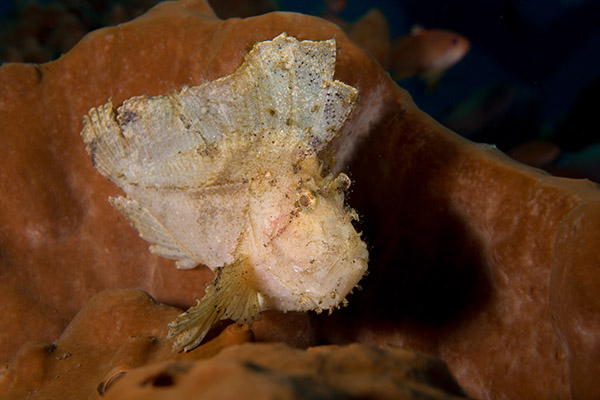
However, not all of the most photogenic critters are particularly rare at all. Today we will be talking about one of our most common critter encounters that can still grab the attention of even the most serious critter hunters â the Leaf Scorpionfish.
What are Leaf Scorpionfish?
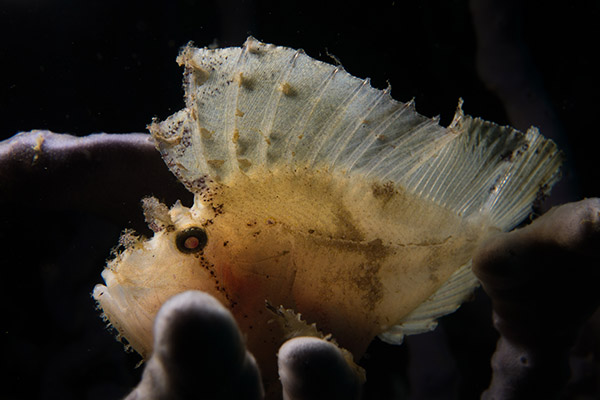
Scientifically known as Taenianotus triacanthus, leaf scorpionfish (often referred to as paper fish, or simply leaf fish) are a member of the Scorpaenidae family, meaning they are closely related to stonefish, lionfish, and other scorpionfish. Much like other Scorpaenidae, leaf scorpionfish have venomous spines, however their venom is considerably weaker than other scorpionfish â with stings often being compared to stinging nettles or a mild insect sting.
Although they are a part of a much larger family, they are the sole member of the genus Taenianotus.
They are quite a widely distributed species, spanning almost all tropical Indian and Pacific waters â from the Red Sea, to the Galapagos Islands, and as far south as New South Wales, Australia.Â
What does a Leaf Scorpionfish Look Like?
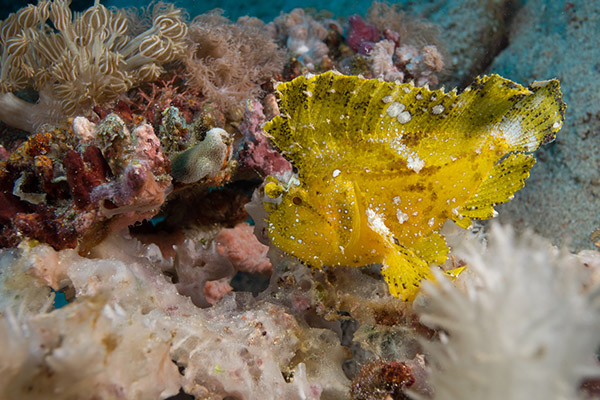
Despite leaf scorpionfish being members of the Scorpaenidae family, they look very distinctive compared to their more venomous cousins.
Growing to a maximum length of around ten centimetres, they are quite small in comparison with other scorpionfishes. What really sets them apart is their large and distinctive dorsal fin, which starts just behind their eyes and continues all the way to their anal fin. The dorsal fin is as thin as a leaf, hence the name âleaf scorpionfishâ. It is actually thin enough to shine a light through and see the veins and spines running through the fin.
While most other members of the family Scorpaenidae tend to be highly camouflage (except lionfish), the leaf scorpionfish is actually quite easy to spot. They can be found in a range of bright and dull colours; pink, yellow, white, red, green, or brown. They often have a few splodges of colour or patches of real algae growing on them to help conceal their true identity. Like many fish, they can change their colour over time to help them blend in with a new environment â leaf scorpionfish moult every ten to 14 days, and their colour can change after each moult.
Leaf Scorpionfish Behaviour
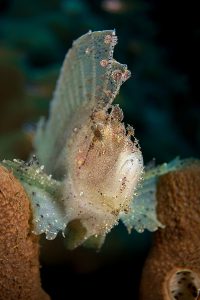
The size, shape, and often colour of the leaf scorpionfish resembles that of a dead leaf in the water â which they use for both hunting and protection purposes. They almost never stay completely still, rather rocking gently sideways â making it really look like a leaf that is simply rocking back and forth in the surge.
Like all other Scorpaenidae, they are ambush predators that prefer to let their food come to them. They survive on a diet of small fish, larvae, and small crustaceans, which they catch by waiting for their prey to get close enough, before suddenly opening its large mouth cavity and effectively sucking the prey in â in a similar manner to frogfish.
Their camouflage does not only help them hunt â it also helps them survive predation. Very few marine animals would want to eat a decaying leaf, and those that do could never pose a real threat to the leaf scorpionfish. Although they have the mildest venomous of the Scorpaenidae family, a sting could still pack a fatal blow to many smaller fish, and larger ones would not bother because it doesnât look like a decent meal.
Where can I Dive with a Leaf Scorpionfish?
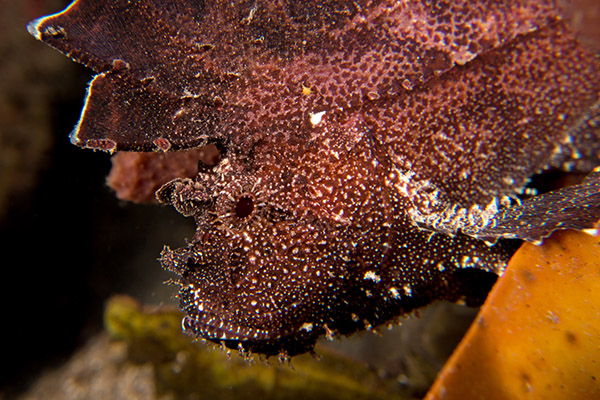
Leaf scorpionfish can be found at almost any dive site in Bunaken Marine Park â both during the day and at night, and on the walls and mucky North Sulawesi slopes. They also tend to stay in one spot for a very long time. In fact, at one of the muck diving sites on the mainland, we have had the same three leaf scorpionfish for over two years.
For this reason, leaf scorpionfish are a fairly common feature of our dives, and although we can never guarantee anything underwater, we are always fairly positive you will get a chance to see a full range of different coloured leaf scorpionfish during your stay with us.
Photographing Leaf Scorpionfish
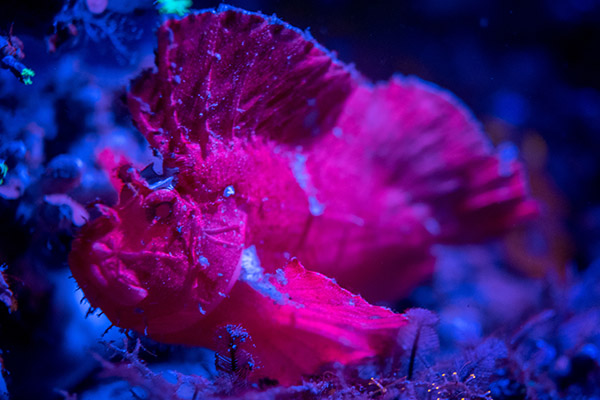
Like other scorpionfish or frogfish, leaf scorpionfish are a joy to photograph because they tend to stay pretty much still (except their leaf-like rocking) for a long period of time. This allows photographers to spend their time with them, getting the picture framed just how they want it to be.
There are still some basic rules that should be followed through. Like all underwater animals, leaf scorpionfish are used to living in low light conditions, and constant exposure to bright lights can cause a considerable amount of stress to the animal and maybe cause it to flee. If you are using an external flash, please limit the number of photos you shoot. If you are not happy with any of them, don’t worry. They are one of the more commonly encountered critters in Bunaken Marine Park, so there is a very good chance your guide can find you another one on the next dive.
The eyes are especially interesting features of the leaf scorpionfish because they are extremely reflective. Most photos taken with an external flash result in a shiny, mirrored effect from the eye â more so than with any other fish. The dorsal fin can also be used in an interesting way too. As it is so thin, it is possible to backlight the fin and see the spines and veins running through it.

